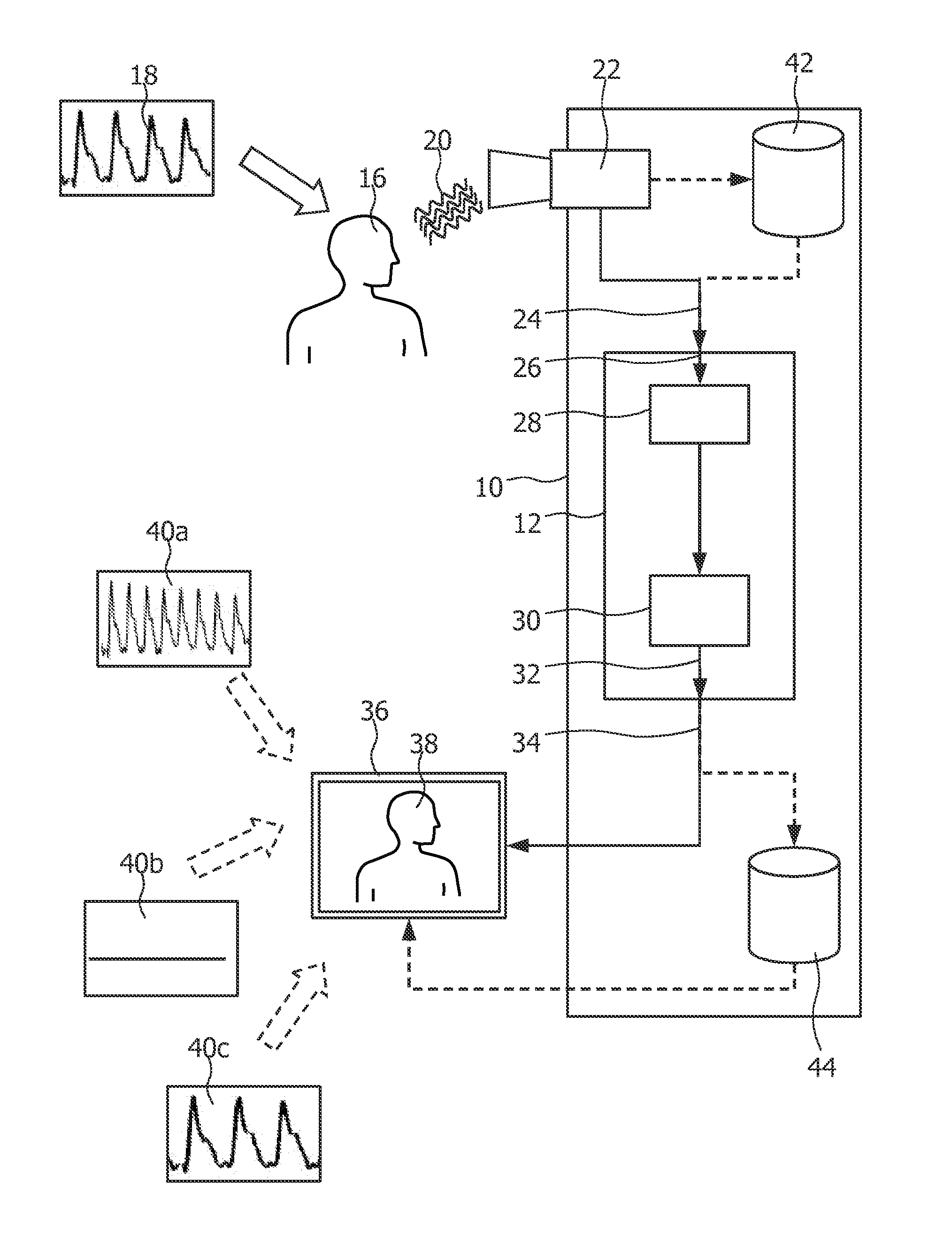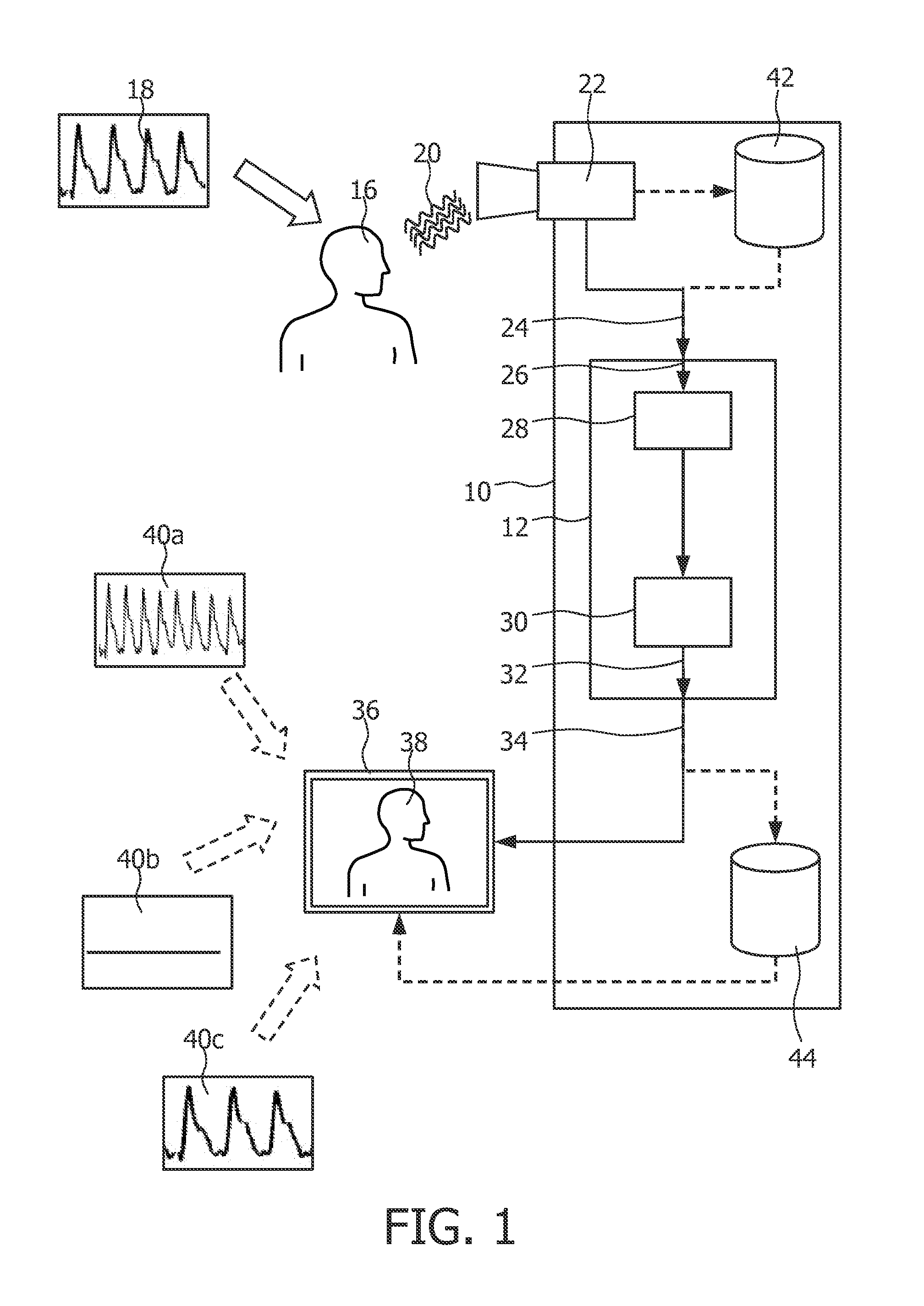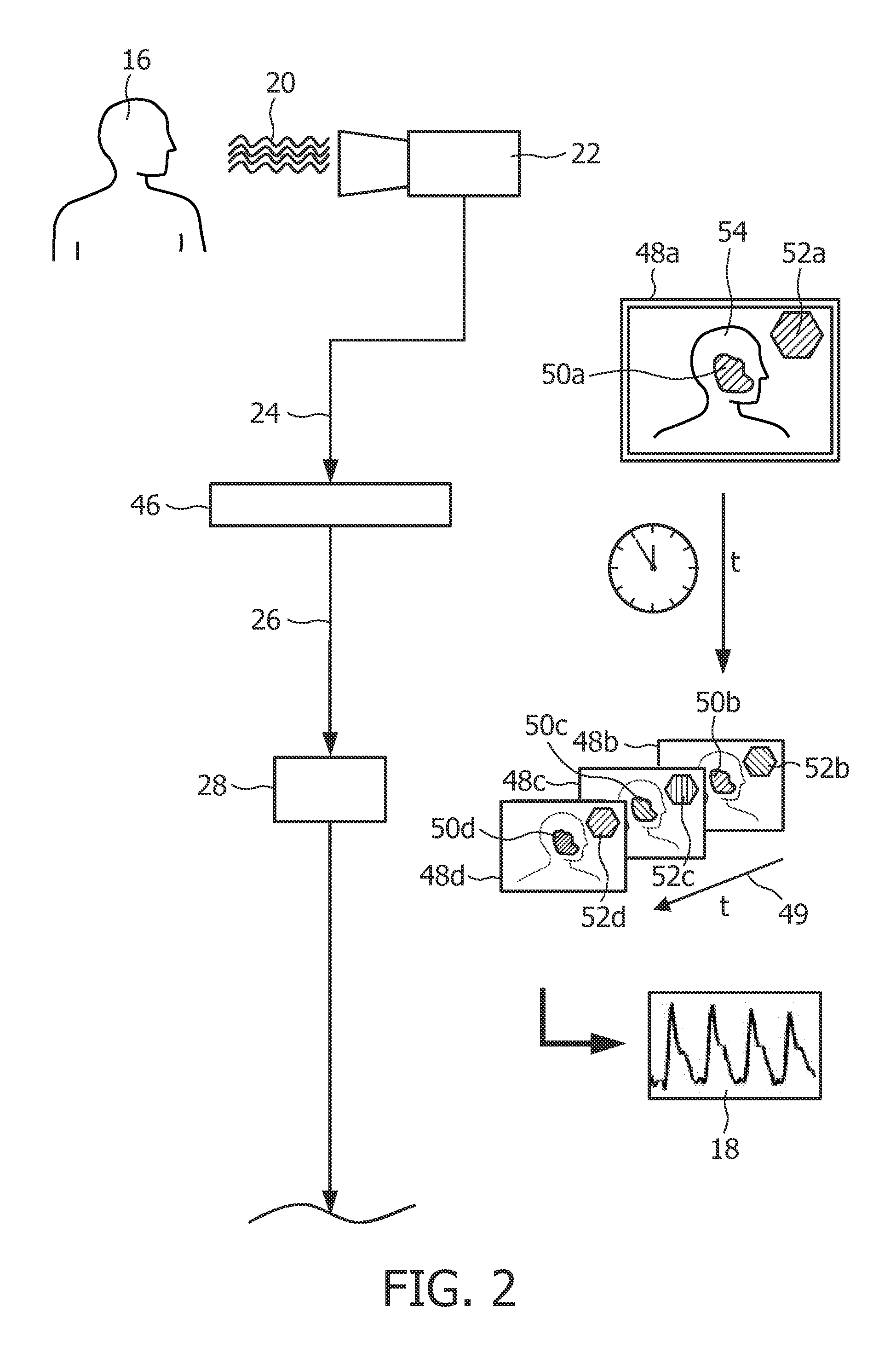System and method for converting an input signal into an output signal
a technology of input signal and output signal, applied in the field of system and a method for processing data for converting input signal into output signal, can solve the problems of increased risk of loss of control of personal information, inapplicability of rigorous masking, etc., and achieve the effect of preserving a certain level of privacy
- Summary
- Abstract
- Description
- Claims
- Application Information
AI Technical Summary
Benefits of technology
Problems solved by technology
Method used
Image
Examples
Embodiment Construction
[0067]Referring to FIG. 1, a system for processing data is illustrated and denoted by a reference numeral 10. The system 10 can be utilized for recording image frames of an object 16. The object 16 can be a human being or animal, or, in general, a living being. For extracting desired information from the recorded data a defined part or portion of the object can be recorded by capturing a series of image frames over time. A proper data base for subsequent image processing can be created in such a way. Several extraction steps can be applied to the collected data, so as to gain a vital signal 18 therefrom, such as heart rate, respiration rate, or heart rate variability. The vital signal 18 can be considered an illustrative example of several vital signals derivable from captured image sequences. As mentioned above, WO 2010 / 100594 A2 discloses a method of extracting the desired signals by analyzing a sequence of image frames as well as several refinements thereof. It could be demonstra...
PUM
 Login to View More
Login to View More Abstract
Description
Claims
Application Information
 Login to View More
Login to View More - R&D
- Intellectual Property
- Life Sciences
- Materials
- Tech Scout
- Unparalleled Data Quality
- Higher Quality Content
- 60% Fewer Hallucinations
Browse by: Latest US Patents, China's latest patents, Technical Efficacy Thesaurus, Application Domain, Technology Topic, Popular Technical Reports.
© 2025 PatSnap. All rights reserved.Legal|Privacy policy|Modern Slavery Act Transparency Statement|Sitemap|About US| Contact US: help@patsnap.com



